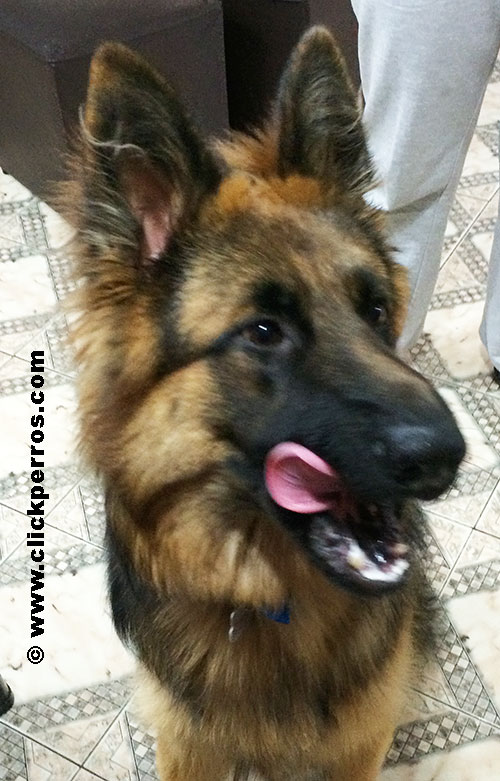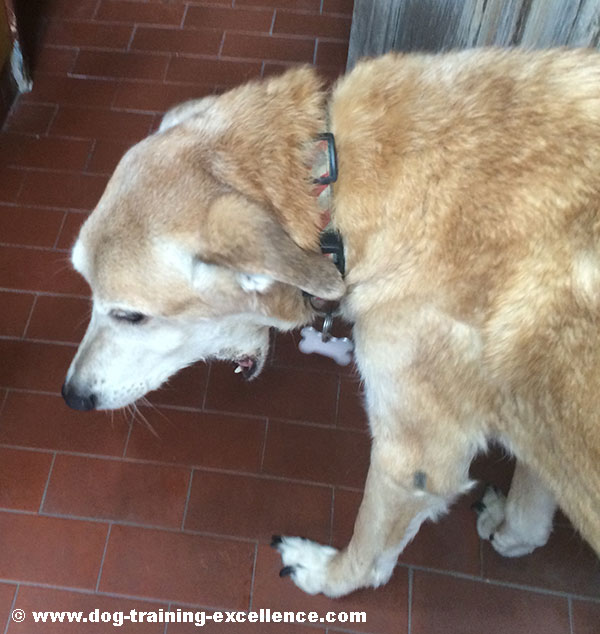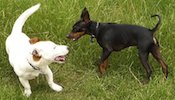I try to write my posts as unbiased as possible and recommend the products I consider to be useful and the best. I use affiliate links, this means that–at no extra cost to you–I can make a commission on a purchase you make after clicking on them. As an Amazon Associate I earn from qualifying purchases.
Reading Dog Body Language:
Calming and Play signals
Reading dog body language can be tricky if you don't know what you are looking at. This is specially true with calming signals, which are body postures dogs use to calm other dogs or even themselves.
It is not natural for dogs to walk around other dogs they don't know, calming signals are essential to keep things cool and prevent unwanted fights. If you learn to read your dog's body calming signals, you will be able to take her/him out of a stressful situation.
Reading dog body language calming signals is also useful to take your dog away from a potentially dangerous situation, you can read these signals in your dog or another dog and separate them before things get worse.
You can also use calming signals yourself to appease your pooch or a strange and fearful dog. Dogs will also show calming signals to humans, reading dog body language will be essential to stop doing something you probably shouldn't.
Reading dog body language: Calming signals
Turid Rugaas is an expert dog trainer with over 25 years of experience. She has observed thousands of dogs in many different situations. This has enabled her to isolate specific behaviors that she calls "Calming Signals".
Calming signals are behaviors dogs perform in stressful situations to calm themselves and calm the other dog (or person) in that situation.
Because dogs do have a hierarchy, it is important that they have signals to tell each other things like "I'm in charge here, but I mean you no harm" or "I know you are in charge, I do not want any problems!".
Luckily these signals seem to have come from an evolutionary past and most dogs will know them from puppy-hood, although some dog trainer also suggest that many of these signals are taught by the parents, so puppies taken too early away from their mom and litter may have difficulty understanding them.
Other dogs may loose this knowledge because of certain experiences while some will be great at using them and staying out of trouble. So, all we need to do is learn how to recognize them and act accordingly.
For example: if you notice your pet is showing calming signals to a strange dog in the park, but the stranger is not recognizing these signals and continues being threatening...it's time to act and get your friend out of that situation immediately!
Reading dog body language: Facial calming signals
 Photo courtesy of blumenbiene |
|
 |
|
 "I'm uncomfortable" "I'm uncomfortable" "Eat!" "Eat!" |
|
 This dog is yawning and avoiding eye contact. This dog is yawning and avoiding eye contact. |
|
Calming signals postures
|
 Photo courtesy of El Caganer. |
|
 Photo courtesy of blumenbiene. |
 Photo courtesy of Lil Shepherd. |
- Moving slowly: This can also be a calming signal. Slow movements tend to calm the dog itself and other dogs as well.
- Turning one's back: If you see dogs turning their back on other hounds, this could be a calming signal. It is saying "I don't want trouble, I'll look the other way".
Happy and Playful Signals
|
 Tail up- shoulders down Tail up- shoulders down |
|
 |
- Yelping: Dogs will yelp to signal they have been hurt. This is how puppies learn. If you see a puppy yelping, but the second dog is not stopping, separate them!
- Sneezing: I have seen some puppies start sneezing in the middle of a really fun play time. This, in the correct context, can mean that the puppy is having fun!
- Chasing: Puppies and young pooches love to play chase. They might do a play bow and then run to entice you or another dog to chase them. In a healthy chasing game dogs take turns to chase each other. If you see that a puppy is being chased ALL the time, something is wrong. Stop them and let them take a break apart.
 |
 |
Reading dog body language is an important aspect of dog training.
What is YOUR dog saying? Ask your question or tell us your story!
Other articles in this series:
Home > Dog Behavior > Dog Body Language > Calming and Play Signals





New! Comments
Questions? Anecdotes? Tips? Leave me a comment in the box below.